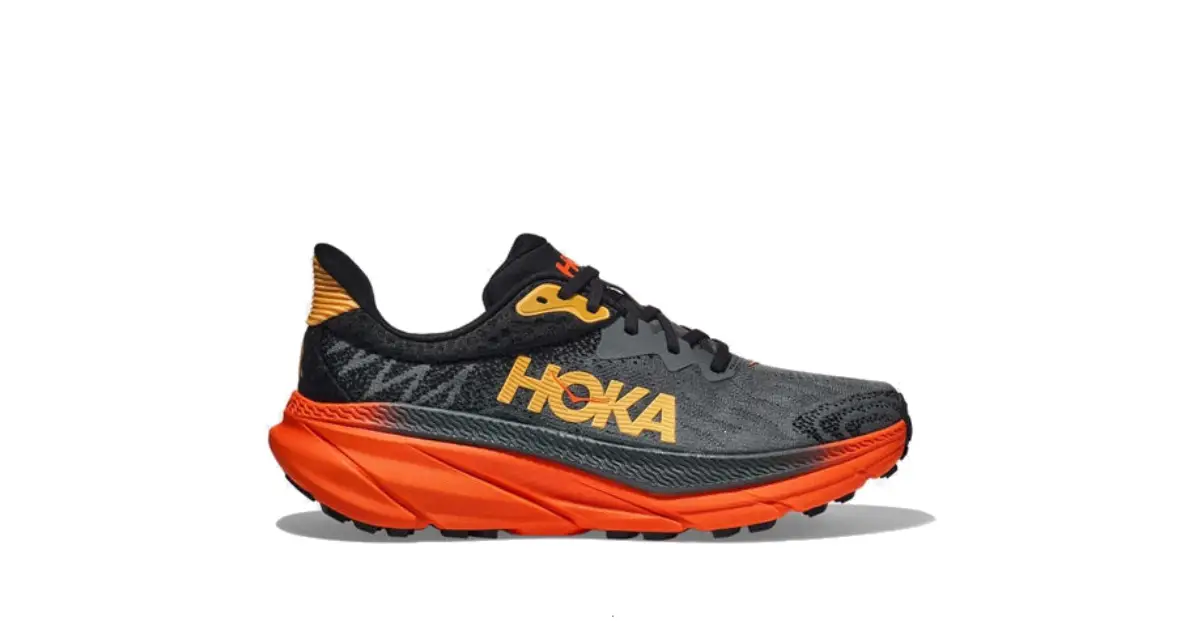Hoka Challenger ATR 7





The Hoka Challenger ATR 7 stands out as one of the top options for runners seeking a trail running shoe that delivers comfort, durability, and all-terrain versatility. This seventh edition strengthens its hybrid identity with updates that enhance performance on both mountain trails and urban surfaces. In this review, we’ll break down its technical features, how it handles different conditions, and our impressions after logging real-world mileage.
Fresh design and first impressions
One of the first things you’ll notice is the lightweight feel—surprisingly so for a shoe with this much cushioning. They’re soft and plush underfoot, but without the bulky, “boat-like” sensation found in some of Hoka’s more maximalist models. The midsole has gained volume over the previous version, but it feels firmer and more stable.
The compressed EVA foam in the midsole provides excellent underfoot protection, ideal for long distances on varied surfaces. Initially, there’s a bit of stiffness, especially around the heel and midfoot, but the shoe quickly adapts after a couple of runs. The cushioning feels structured, delivering a sense of confidence without compromising energy return.
Grip and performance across different surfaces
One of the Challenger ATR 7’s greatest strengths is its ability to handle a wide range of surfaces. The outsole features 4mm lugs of varying sizes, which offer reliable traction on dirt paths, gravel trails, and paved roads—ensuring a smooth transition from trail to city.
However, in very technical terrain with deep mud or loose rocks, the grip is less secure compared to more aggressive trail models. This shoe isn’t trying to compete with something like the Speedgoat for mountain terrain, but rather aims to excel on mixed routes—and in that, it truly succeeds.
The Durabrasion Rubber used on the outsole is tougher than Vibram MegaGrip, offering increased durability at the cost of slightly reduced grip on wet or highly technical surfaces. It’s a smart trade-off for a shoe designed for versatility.
Comfortable upper with good breathability
The upper strikes a great balance between support, breathability, and lightweight construction. The engineered mesh keeps your feet cool on warm days and during longer runs. Durability is solid overall—after many miles, we haven’t noticed any signs of premature wear, though some users report that very abrasive terrain may wear the upper faster than the midsole.
Fit-wise, the forefoot is on the narrow side. If you have wide feet, you might find the toe box snug on longer outings. Still, the upper is comfortable for most runners and the lockdown is secure.
Stability and smooth transitions
The wider and firmer midsole platform offers solid stability, especially on descents or uneven surfaces. Transitions are smooth, and the moderate 5mm drop promotes a natural stride. The early-stage rocker geometry helps drive the foot forward, making the Challenger ATR 7 surprisingly efficient for moderate paces on pavement.
After plenty of runs alternating between asphalt and light trails, durability has proven to be a strong point—there’s no noticeable wear on the sole or any loss of cushioning performance over time.
Smart Details that enhance the ride
What makes the Challenger ATR 7 stand out isn’t just the technical performance—it’s the little details that improve everyday use. A padded tongue, plush heel collar, and easy-to-use heel loop make the shoes easy to slip on and off, while enhancing overall comfort whether you’re running, walking, or wearing them casually.
The clean, sporty design also makes them a stylish choice for those looking for performance footwear that doesn’t scream “technical.”
Final thoughts: Who should choose the Challenger ATR 7?
Simply put, the Hoka Challenger ATR 7 is a great pick for runners who want one shoe that can handle everything—from urban runs to light trails—without having to change footwear. If your training routine mixes road, gravel, and gentle paths, these are a top-tier option.
They offer cushioning, comfort, reliable grip on moderate terrain, and above-average durability. They’re not the most technical for mountain running, nor the fastest for road racing, but few shoes strike a better overall balance than this one.
| ✅ Pros | ❌ Cons |
|---|---|
| Lightweight feel with structured cushioning | Less secure on very technical or muddy terrain |
| Excellent versatility for trail and road use | Slightly stiff out of the box |
| Durable outsole with good traction on moderate surfaces | Narrow toe box may not suit wide feet |
| Smooth transitions and natural stride (5mm drop + rocker) | Less grip than Vibram in wet, rocky conditions |
| Comfortable upper and breathable mesh |






